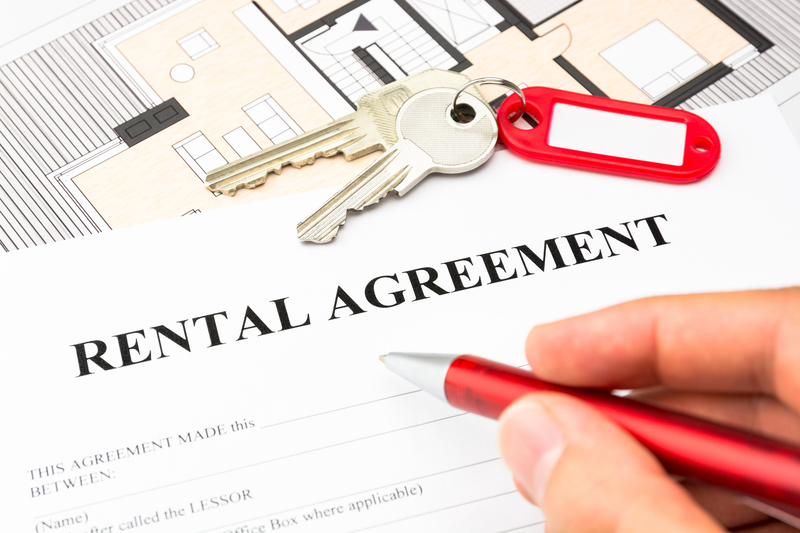Moving Your Bed and Mattress: Tricks for a Smooth and Easy Move
Relocating to a new home is both exciting and overwhelming, but moving your bed and mattress comes with a unique set of challenges. Bulky, heavy, and awkwardly shaped, beds and mattresses require special care so your items arrive intact and your move is as effortless as possible. In this comprehensive guide, you'll discover expert tips and clever tricks for a smooth bed and mattress move, whether you're hiring movers or doing it yourself.

Why is Moving Your Mattress and Bed Frame Challenging?
Unlike boxes or small furniture, beds and mattresses don't fit easily through doors, stairwells, or elevators. A poorly executed move can damage your furniture, walls, or even cause injury. Understanding the unique challenges of bed and mattress removal can help you plan more effectively and avoid common pitfalls.
- Size and rigidity: Most mattresses, especially king or queen sizes, have limited flexibility.
- Avoid bend or fold: Folding or bending certain mattress types (like spring) can permanently damage them.
- Delicate materials: Memory foam and pillow tops require protection against tears and water damage.
- Heavy bed frames: Wooden, metal, or upholstered frames can be weighty and cumbersome.
- Disassembly required: Most beds must be dismantled, adding complexity and time.
Key Benefits of Moving Your Bed and Mattress Safely
Transporting your bed and mattress with care ensures:
- Preservation of comfort and structural integrity
- Reduced risk of expensive repairs or replacements
- A cleaner, more hygienic sleeping environment in your new place
- Protection for your home, walls, and flooring during the move
Pre-Move Planning for Your Bed and Mattress
A successful mattress move begins with a bit of preparation. Here's how to get started:
1. Assess Your Bed and Mattress Type
- Foam Mattresses: Can often be bent slightly but still need protection.
- Innerspring Mattresses: Must stay flat to avoid coil damage.
- Pillowtop, Hybrid, or Specialty Mattresses: Require extra care and should not be folded.
- Bulky Frames: Platform, canopy, or adjustable beds often require more disassembly time.
2. Measure Doorways and Hallways
- Use a tape measure to check your mattress and frame fit through all passageways.
- Plan alternate routes if space is tight.
3. Gather Supplies for a Hassle-Free Bed Move
- Mattress bags or heavy-duty plastic covers
- Moving blankets and bubble wrap
- Straps, ropes, or bungee cords
- Hand tools (screwdriver, wrench, Allen keys)
- Packing tape and permanent markers
- Work gloves and a hand truck/dolly (if possible)
- Zip-top bags for hardware
Step-By-Step Guide to Moving Your Bed and Mattress
-
Clear and Prepare Your Room
Remove all bedding--pillows, sheets, blankets--and pack them separately. -
Disassemble the Bed Frame
- Start with the headboard and footboard (if any).
- Keep screws, bolts, and washers in labeled zip bags and tape them to frame sections.
- Take pictures during disassembly for easier reassembly at your new place.
-
Protect the Mattress and Frame for Moving
- Encase the mattress inside a mattress moving bag to guard against dirt, moisture, and tears.
- Wrap the frame, slats, and hardware with moving blankets to prevent scratches and dings.
- Tape blankets securely and label pieces clearly.
-
Enlist Help and Plan Your Carry Path
- Never move a mattress or heavy frame alone!
- Recruit at least one friend or moving professional.
- Remove obstacles, rugs, or trip hazards from your path ahead of time.
- Prop doors open and protect corners with towels or corner guards.
-
Carefully Move Each Piece
- Lift with your legs, not your back, and coordinate movements with your helper.
- Use a hand truck or furniture sliders for added safety, especially on stairs.
-
Loading and Securing in the Truck
- Lay the mattress flat in the truck to prevent warping. Never stand it on its side for extended periods.
- Secure with straps to avoid shifting during transit.
- Place the frame on top or to the side, cushioned by blankets.
- Keep hardware bags and assembly instructions together in a marked box or bag.
Expert Tips for Moving Mattresses and Beds Easily
- Invest in a quality mattress cover. This protects against dirt, dust, and moisture -- essential for a long moving day.
- Don't fold unless designed for it. Only fold latex or some foam mattresses and never bend innersprings.
- Use mattress straps to improve grip and make carrying easier.
- . Simple labels ("left side," "headboard," etc.) prevent confusion during reassembly.
- Photograph the assembly steps. Pictures help when putting everything back together in your new home.
- Protect sharp bed corners using extra blankets or bubble wrap to avoid wall damage when maneuvering around tight spaces.
- Check local regulations. If moving long distance, confirm there are no restrictions for used mattresses in your destination city or state.
Special Considerations for Mattress Moves
- Adjustable or motorized beds require detaching electrical components; pack controllers and cords securely with the frame.
- Antique or custom beds should be wrapped in heavier moving blankets and transported with extra care.
- If you're moving to a humid climate, keep mattresses dry; use moisture absorbers inside covers for added protection.
Moving Your Bed and Mattress Locally vs. Long Distance
Local Moves
For moves within a city, you can sometimes manage with improvised methods: a pickup truck, tie-downs, and basic covers. However, it's still vital to protect against the elements--even a short rain shower can ruin an unprotected mattress.
Long-Distance Moves
A long-distance bed and mattress relocation demands more robust strategies:
- Use thicker plastic mattress bags, taping all edges for a water-tight seal.
- Don't place heavy items on top of mattresses in the truck--this can destroy the structure.
- Upon arrival, air mattresses out immediately to prevent mildew.
- Confirm your moving company is insured and experienced with beds and mattresses.
Professional Mattress and Bed Moving Services
When Should I Hire Movers?
- Luxury or specialty mattress/bed frames that require advanced handling
- Moves involving stairs or narrow corridors
- If you have physical limitations or want to avoid injury
- Long-distance/ cross-country relocations
Professional movers provide muscle, insurance, and sometimes climate-controlled trucks to keep your bed and mattress safe during the move. Make sure you choose a mover with mattress protection experience and positive reviews.
DIY Bed and Mattress Moving: Pros and Cons
- Pros: Budget-friendly, more control, flexibility on timing.
- Cons: Risk of injury, potential for damage, time-consuming if you lack experience.
How to Reassemble and Clean After a Bed Move
Reassembling Your Bed Frame
- Lay out all labeled parts and hardware before starting.
- Work from the manufacturer's instructions or your photos if needed.
- Tighten bolts and screws incrementally to avoid warping the frame.
- Inspect for missing fasteners, and never force parts together.
Freshen Up Your Mattress
- Let the mattress air out for several hours after unwrapping to dissipate any odors or moisture.
- Vacuum both sides to remove dust, and optionally sprinkle with baking soda for extra freshness before making the bed.
- Check for damage, stains, or tears. If any occurred during the move, address them immediately to prevent further harm.
Common Mistakes to Avoid During Bed and Mattress Moving
- Skipping mattress covers or using thin plastic that tears easily
- Bending or dragging mattresses, especially innerspring types
- Not disassembling bed frames fully, making them harder to maneuver
- Forgetting to keep hardware and assembly instructions organized
- Leaving mattresses upright for hours (can lead to sagging or distortion)
- Not enlisting help for large or heavy beds and risking injury

Creative Solutions for Challenging Moves
Moving Beds and Mattresses in Apartments or Tight Spaces
- Use mattress carrying straps with handles to improve maneuverability.
- If your mattress won't fit, check if it's possible to temporarily remove doors or hinges.
- Some split or modular bed frames can be taken apart even further--check your manufacturer's website or instructions.
Alternative Options: Storage or Donation
- If your bed or mattress won't fit in your new home, consider short-term storage in a climate-controlled facility.
- Donate gently used mattresses to local charities--just check for cleanliness and regulations in your area.
Conclusion: A Stress-Free Bed and Mattress Move is Possible
Moving your bed and mattress doesn't have to be a headache. With a bit of *preparation, the right packing materials, and help from friends or professionals*, you'll ensure your sleep setup arrives safely and ready for a restful first night in your new home.
Remember, the key to an easy bed move is protection, organization, and proper lifting. Spend a little extra time on care and planning--your back (and your mattress) will thank you!
If you're planning a move soon, bookmark this guide and return to these mattress moving tricks to keep your relocation smooth, safe, and efficient.